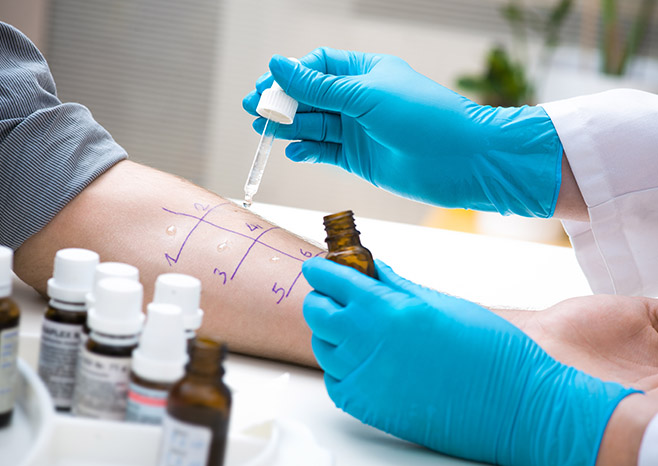
Allergy Tests 101 – What to Expect
An allergy test can help confirm what substances you’re allergic to.
The most common type of allergy test is the skin prick test, which checks for allergic reactions to as many as 40 different substances at once. There are several allergic conditions that are best diagnosed with an allergy skin prick test. These conditions include hay fever, allergic asthma, eczema, food allergies, and allergies to penicillin, bee venom and latex.
Skin prick tests, also known as puncture or scratch tests, generally take 20-40 minutes. Adults are usually administered the test on the forearm, and for small children, the test is usually administered on the upper back.
Below, please find a step-by-step synopsis of what to expect when getting a skin prick allergy test.
PREPARATION: Refrain from using antihistamines in the 3-7 days preceding the test.
MARKING: After your allergist or nurse cleans the test location with rubbing alcohol, your skin will be marked and drops of allergen extract will be applied to each mark.
EXPOSURE: To introduce the allergen into your skin’s surface, lancets are used to poke the skin. A new lancet is used for each allergen. Next, the skin is monitored for a reaction.
EVALUATION: If you’re allergic to any of the substances tested, a small red bump will appear for each allergen you’re having a reaction to. Because the skin was marked before the test, your doctor will be able to determine which allergen caused the reaction as well as the severity of the allergy, based on the size of the bump.
The skin prick test has been an effective method of allergy diagnosis for over 100 years, but not everyone is a good candidate for allergy skin testing. Those with histories of severe allergic reactions, on medications that could interfere with test results or having a skin condition like eczema or psoriasis should consider alternative tests, like a blood test (in vitro immunoglobulin E antibody test). Other testing options include patch and intradermal testing.
After evaluating the results of your allergy test, and after you’ve confirmed what substance(s) you’re allergic to, your doctor will design an allergy treatment plan with you, which may include immunotherapy, medications and allergen avoidance.
Sources:
https://acaai.org/allergies/treatment/allergy-testing/skin-test
https://www.mayoclinic.org/tests-procedures/allergy-tests/about/pac-20392895




